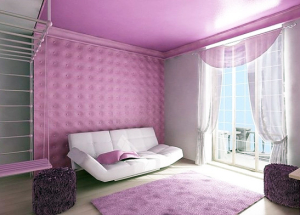There is a huge number of all kinds of methods for exclusive design of walls in the apartment. A visually appealing and most effective option is draping the walls with a cloth. The variety of the most unexpected stylistic decisions and the rich color palette of noble shades, the endless flight of design ideas and the possibility of using different finishing fabric allow you to create highly artistic solutions in the design of modern interiors.
 What are the soft walls, what is the technology of their creation and what materials should be used, we'll talk about this in the article.
What are the soft walls, what is the technology of their creation and what materials should be used, we'll talk about this in the article.
Selection of material for creating soft walls
Traditionally, leather, leatherette and fabric are used to create soft walls.
the cloth
The most acceptable and common variant of decorating walls is fabric finishing. Choose it should be responsible, because the material must have strength and durability, do not stretch and do not sag, be dense and not shine, and also withstand all kinds of loads and even encroachments of domestic animals. In this scenario, the choice is obvious - upholstery fabrics for upholstered furniture are ideal.
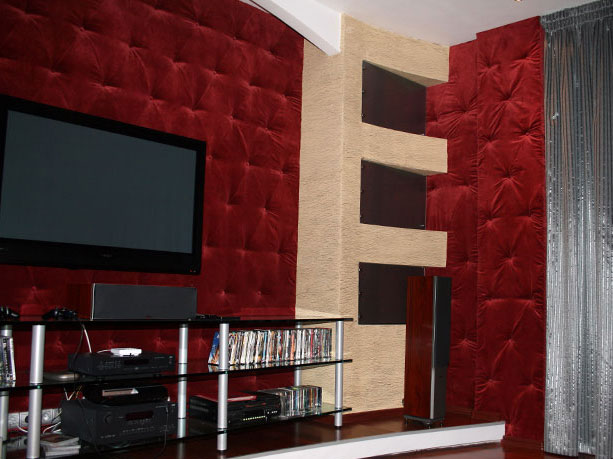
High quality and excellent performance characteristics, a wide range of delicious color and texture solutions determine the incomparable success of the upholstery fabric and separate it into a separate group of materials for creating soft walls in the interior.
You can familiarize yourself with the technology of decorating walls with cloth by watching a video on youtube.
Genuine Leather
Very presentable and elegant look walls, decorated with leather. A unique combination of practicality and noble elegance, strength and durability, the possibility of creating a unique interior and the realization of any design idea combined with an ideal price-to-quality ratio make natural leather the most suitable and most popular material for creating such an unusual and exclusive interior design. A rich palette of shades includes besides classic colors (white, red), pastel shades (beige, smoky, metallic) and a special line in the style of glamor - canvases decorated with dazzling rhinestones.
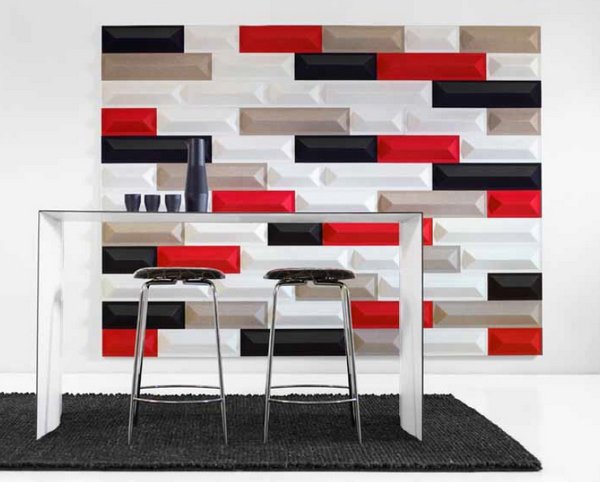
Such material will create an amazing mood in the room, the office will fill with severity, and the bedroom - with delightful comfort and visual softness. Do you dream of an exclusive design of a modern interior? Using your own imagination and unique material, for example, in the form of embossed leather, you can make any dreams come true, giving the room an incredibly elegant and luxurious look!
Imitation leather
If you decide to choose your leatherette, you should know that this material will cost you much more than cloth. More durable, and therefore, reliable leatherette is ideal for creating individual soft tiles, fixed in the future to the wall surface in accordance with the chosen style or apply the style capitol.
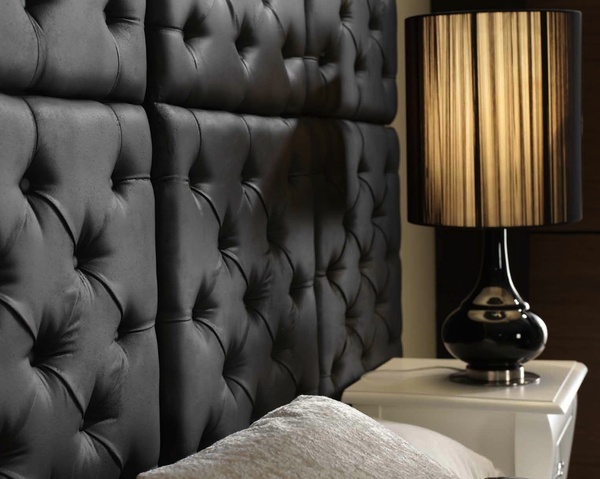
Choice of filler
As a filler for the formation of soft walls can act sintepon or foam rubber, which have their own operational characteristics and advantages.
Foam
The use of foam rubber allows you to get softer walls, the thickness of which can reach 4-6 cm. This is quite enough to create an attractive and cozy option for decorative decoration of living quarters. Due to its dense structure and durability, it is excellently suited for forming bulky structures or exclusive panels in a bedroom or a children's room.
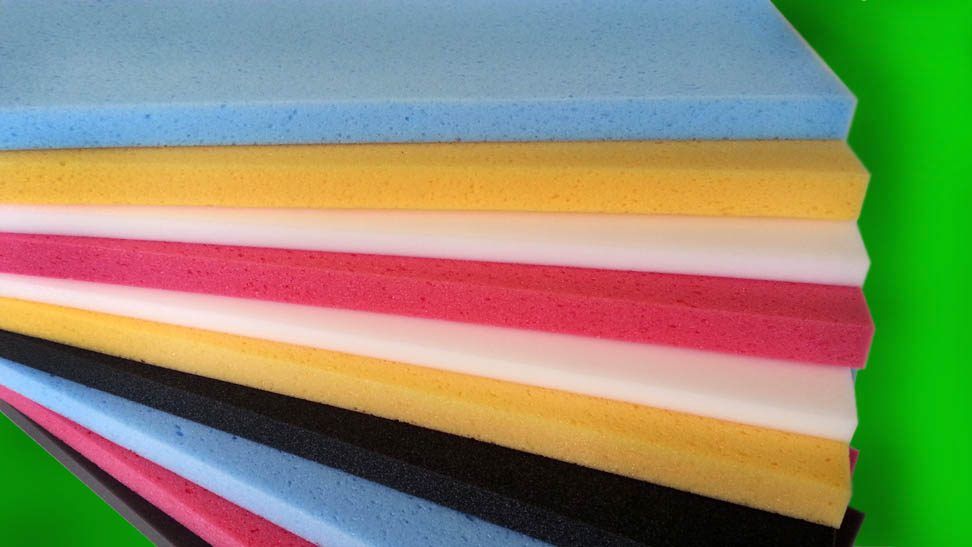
Syntepon
Thanks sinteponu, you can create a uniform surface. Since it weighs considerably less than foam rubber, the deformation and sagging of the material are completely excluded. An undoubted success is the use of sintepon when decorating a wall surface at the head of the bed or the skin of the entire room. Lay the sintepon at the same time follows the stripes, and you can fasten with a furniture stapler or nails.
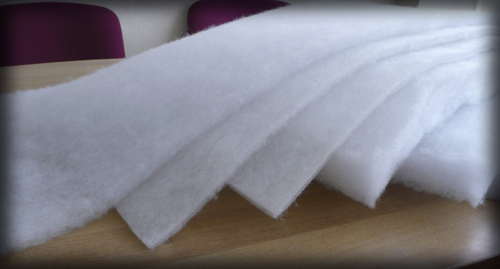
Options for creating soft walls
Among the main options for creating a soft surface are:
- drapery;
- full tightening of the wall surface with the use of a rack-and-pinion frame;
- full tightness with fastening in the Capiton style;
- the creation of soft tiles.
1. Draping
Method of drapingonly partly can be attributed to the methods of forming soft walls, since it only creates an easy visibility of the bulk surface, but it allows to obtain a perfectly smooth seamless coating. Thanks to the extensive choice of different fabrics and a wide palette of rich colors, designers masterfully embody the most unusual ideas, creating original decorative masterpieces in the design of the surface.
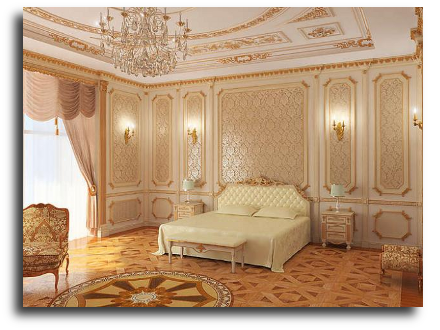
When draping, the fabric is glued to the wall or completely, or fragments, or attached more freely, making the room more cozy and attractive.
2. Full walling of the wall surface using a rack-and-pinion frame
This method of decorating the wall involves stuffing wooden slats around the entire perimeter of the wall and filling the free space with a sintepon. The edge of the fabric, wrapped several times, is attached to the top rail using a construction stapler. Then the material is evenly stretched, excluding creasing, and fixed on the sides and on the lower rail.
Remember:to fix the lower end of the fabric you will need an additional rack taking into account the preliminary measurement of the length of the material to the bottom of the frame. Then the rail, mounted on the bottom edge, is fetched behind the bottom edge of the finished frame and fastened with nails. This method eliminates the need for an intermediate fastening of the tissue. If the wall surface is large enough, it is more advisable to divide the area into several zones, in each of which you can arrange a separate frame for stretching the fabric.
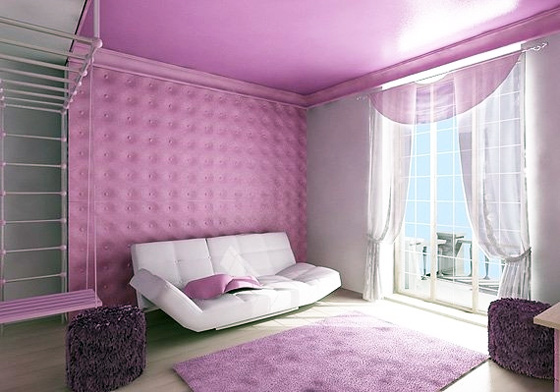
3. Full tight fitting with a Capiton style
Capiton,the so-called carriage hanging, is a special method of soft upholstery of walls, in which upholstery fabric and filler (foam rubber) are attracted to the surface of the wall by figured nails or buttons. Often, the capiton is found both in the design of upholstered furniture, giving it a refined and even aristocratic appearance, and when creating decorative soft panels on the walls.
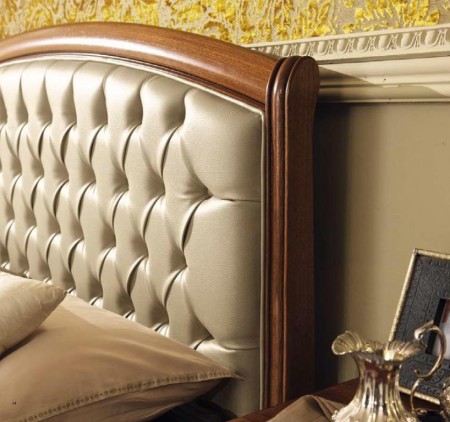
To perform such a tightening on the surface of the sheet, it is necessary to make holes in the areas of future installation of buttons from which any decorative pattern or pattern can be formed.
Such panels can be made independently or bought already ready. On the back of the sheet a fabric stapler is attached with a construction stapler, then foam is laid. From the remaining sides with a small tightening material is fixed, and the pressing buttons are attached.
Remember:to fasten the buttons, it is better to use kapron thread. It is strong, does not stretch and does not rot. Fixing the thread on the button, pull them through the fabric and filler, thread into the holes in the base sheet. Using a stapler, fix the thread from the back side. To strengthen soft wall panels, use liquid nails or dowels.
4. Creating soft tiles
Technology creating soft panelssimilar to the previous version, when sheets of plywood or chipboard are used. In this case, pieces of plywood of square or rectangular shape and dimensions of 450-600 mm are used as a basis. The material is attached around the perimeter from the back side of the sheet, and the finished soft tiles are fixed to the liquid nails back to back, avoiding dust and dirt.
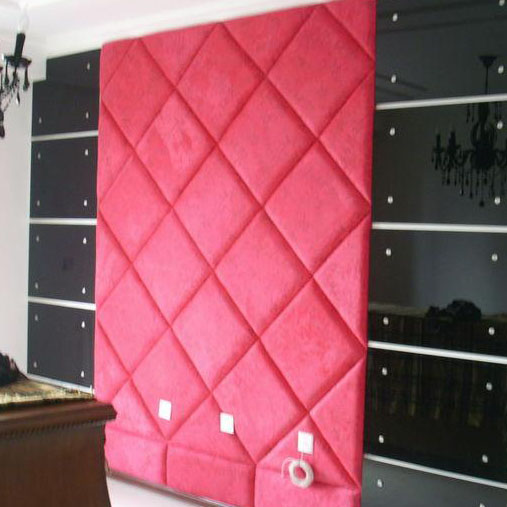
Remember:as an example of the original decorative design of the interior can serve as the creation of soft walls of panels located at a distance of 10-15 from each other.


